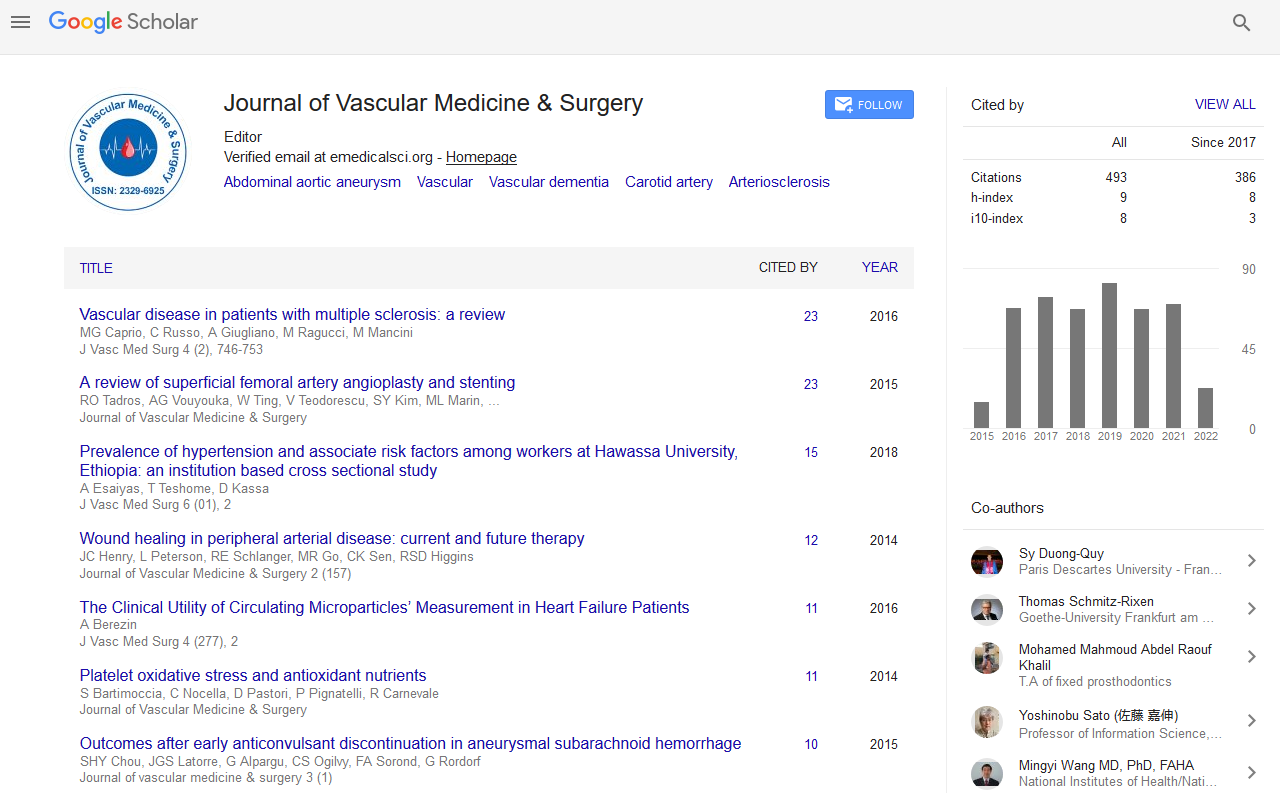Indexed In
- Open J Gate
- Academic Keys
- RefSeek
- Hamdard University
- EBSCO A-Z
- OCLC- WorldCat
- Publons
- Euro Pub
- Google Scholar
Useful Links
Share This Page
Journal Flyer

Open Access Journals
- Agri and Aquaculture
- Biochemistry
- Bioinformatics & Systems Biology
- Business & Management
- Chemistry
- Clinical Sciences
- Engineering
- Food & Nutrition
- General Science
- Genetics & Molecular Biology
- Immunology & Microbiology
- Medical Sciences
- Neuroscience & Psychology
- Nursing & Health Care
- Pharmaceutical Sciences
Abstract
Numerical Simulation of Blood Flow in Double-Barreled Cannon EVAR and its Clinical Validation
Rui-Hung Kao, Wei-Ling Chen, Tzong-Shyng Leu, Tainsong Chen and Chung-Dann Kan
The Double-Barreled cannon stent-graft Aortic Repair (DoBAR) strategy is a specific method for fixing extremely dilated aortic landing-zone issue. Its clinical validation and application may be examined using computational schemes. Three assumed conditions: the single stent-graft, the longitudinal direction (LD)-type DoBAR, and the sagittal direction (SD)-type DoBAR models were examined by computational fluid dynamics (CFD) simulations. Two specific points in one cardiac cycle were plotted. The non-dimensional frequency parameters were calculated to evaluate the flow field stabilities. The primary axial flow skewed from inner to outer aortic portion after passing through the aortic arch at peak forward-flow time (PFFT) and formed the swing signature at peak reverse-flow time (PRFT). The secondary flow developed as counter-rotating vortices of this model. In LD-type, the septum of antero- posterior chambers separated the primary flow to form two individual axial flows, the morphology resembled as the single model at PFFT. In SD-type, the septum of outer-inner chambers divided the flow pathway into two layers, and then weakened the reversed flow strength at PRFT. The septum of the DoBAR limited the development of secondary flow and the swing pattern disappeared in both types. The Strouhal and Wormersly numbers showed the flow pulsatility intensity decreased with steadier flow in both DoBAR models. The Dean numbers disclose the SD-type had weaker axial velocity and weaker secondary flow


